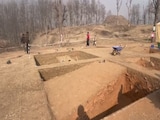Navratri literally translates to “nine nights” and is one of India's biggest seasonal festivals. Observed across regions with regional customs, it's a time many Hindus fast, sing, pray and eat special “vrat” foods for nine days to honour the Goddess. Fasting patterns vary, some people eat once a day, some twice, others only specific foods (no grains, pulses or onion/garlic). While fasting is spiritual, it changes what, how much and when people eat and that matters for people with diabetes.
Paradoxically, festival fasting can set up behaviours that favour weight gain and blood-sugar spikes. Common causes seen during Navratri are:
- Replacing regular complex-carbohydrate meals with energy-dense vrat items such as sabudana/tapioca, potato, fried pakoras, sweets, khajur/dry fruits.
- Using a lot of ghee and sugar in special dishes.
- Eating large evening meals after a long daytime fast.
- Reduced overall activity or sleep disruption. These patterns raise post-meal glucose peaks and increase energy storage as fat. Recent analyses of traditional fasting foods show many vrat staples are high-glycemic carbohydrates unless combined with protein, fibre or healthy fats.
Can fasting be bad for people with diabetes?
Simply put, It depends. Fasting can improve markers such as weight and insulin sensitivity in some people, but it also carries real risks, especially for people on insulin or sulfonylureas. Risks include hypoglycaemia (low blood sugar), hyperglycaemia and dehydration. Diabetes societies therefore recommend a pre-fast medical review, glucose-monitoring plan and possible medication adjustments; they also list criteria when fasting should be avoided. If you have diabetes and want to fast, plan with your doctor well before Navratri.
Diet plan to help diabetics fast safely during Navratri
General rules to follow every fasting day
- Pre-fast medical review: See your diabetes care team 4–6 weeks before Navratri to review meds, targets and test HbA1c. Long-acting insulin/sulfonylurea users are higher risk and often need dose change.
- Check blood sugar often: Before the fast-meal, 2 hours after the main meal, mid-afternoon and at bedtime if on insulin or hypoglycaemia-prone drugs. Break the fast if glucose <70 mg/dL or symptomatic, or if >300 mg/dL (or per your physician's threshold).
- Prefer low-GI vrat staples + protein: Choose buckwheat (kuttu), amaranth/rajgira, barnyard/samak millet, milled bajra/small millet options which are culturally acceptable.
- Hydration & electrolytes: Sip water, coconut water or buttermilk (chaas). Avoid sugary sherbets and packaged drinks.
- Cooking swaps: Shallow-pan or air-fry instead of deep frying; use minimal ghee; avoid added sugar in sweets.
Sample day
Morning
Soaked nuts + seeds + low-fat curd: 6–8 soaked almonds (or 10–12 peanuts) + 1 tbsp roasted chia/flax + 100 g plain yogurt. This gives protein, some fat and slows carbohydrate absorption.
If you must have a grain replacement: kuttu (buckwheat) porridge made with milk/water + crushed peanuts and grated vegetables (in case of savoury, not sweet).
Mid-day small meal
A quick salad with cucumber, tomato, lemon, coriander and a small spoon of roasted peanut powder. Add 1 small boiled potato only if needed, keep portion less than 100 g.
Main eating window (evening or after puja)
- Option A: Rajgira / amaranth khichdi: amaranth with mixed vegetables + roasted peanuts + a bowl of curd. Keep portion moderate.
- Option B: Kuttu chilla (buckwheat pancake) stuffed with grated paneer + side of plain curd.
- Option C: Samak (barnyard millet) pulao with lots of vegetables + roasted peanuts for protein.
Snacks
- Sliced fruit with a handful of roasted peanuts
- 1 Small bowl of plain curd
- 1 Small roasted sweet potato (avoid deep fried snacks and sabudana tikkis heavy in ghee).
- If you include sabudana/tapioca, use the hack below!
Hack: Make sabudana khichdi with lots of roasted peanuts, peas and vegetables, use minimal oil, and control the serving size (say, no more than ~1 cup cooked). Better still, rotate with lower-GI alternatives on alternate days.
Night
Small protein snack if on insulin or on medicines that can cause overnight hypoglycaemia: a small bowl of curd or 1–2 small pieces of paneer or a glass of milk. Avoid sugary desserts.
Other factors to keep in mind:
Activity
Gentle walking or light household work is fine; avoid vigorous exercise in the late fasting hours (raises hypoglycaemia risk).
Medication and monitoring
Don't change meds on your own, always discuss with your care team. Pre-fast counselling should cover when to skip or reduce doses and when to stop fasting (sustained low/high sugars, dizziness, palpitations, vomiting).
Navratri fasting is culturally important and with planning it can be observed safely by many people with diabetes. The keys are: get a pre-fast medical review, choose lower-GI vrat foods and pair them with protein and fibre, monitor blood glucose often, limit fried/sugary vrat specialities and be ready to break the fast if glucose or symptoms demand it.
Disclaimer: This content including advice provides generic information only. It is in no way a substitute for a qualified medical opinion. Always consult a specialist or your doctor for more information. NDTV does not claim responsibility for this information.
References
Pragmatic dietary advice for diabetes during Navratris, Indian Journal of Endocrinology and Metabolism (NCBI/PMC). 2017.
Standards of Medical Care in Diabetes — 2020 (Abridged for Primary Care), American Diabetes Association (NIH). 2020.
Effect of Intermittent Fasting on Glycaemic Control in Patients With Diabetes (review), NCBI/PMC. 2023.
Carbohydrate profiling & glycaemic indices of selected traditional Indian foods (GI study), NCBI. 2022.
ICMR Guidelines for Management of Type 2 Diabetes, Indian Council of Medical Research (ICMR). 2018.















